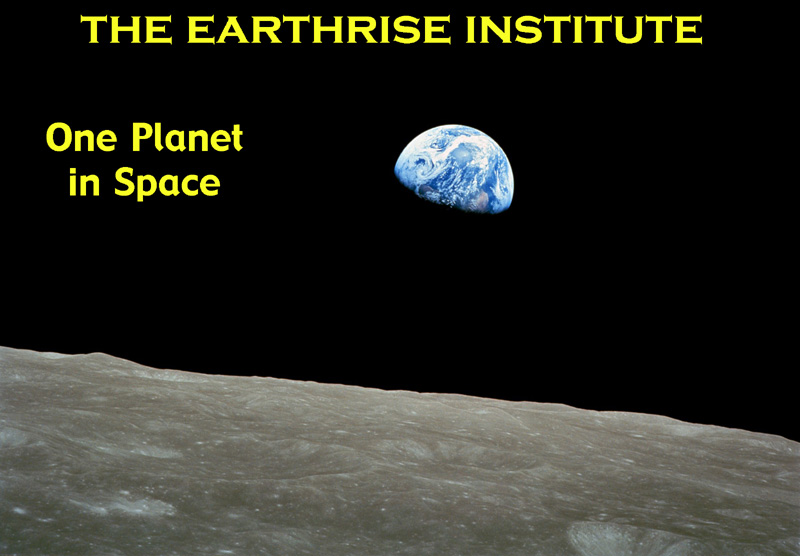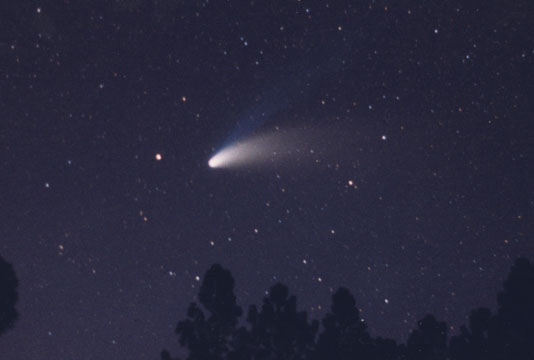
NOTABLE UPCOMING COMETS

For planning purposes, on this page I will list the incoming comets that are expected to become moderately bright or otherwise notable within the next one to two years, and which I expect to add to my tally (if I haven't already). I don't intend this list to be exhaustive, but instead will focus on those comets that are worthy of attention from sky-watchers and other interested people (including, certainly, students) who would not normally be considered "comet astronomers." I plan to update this page every one to two months.
COMET 209P/LINEAR (Perihelion 2014 May 6)
I discuss this comet in the "Countdown" entry for its 2009 return (no. 455), and as I indicate there, on May 29, 2014 it passes only 0.055 AU from Earth. Despite this close approach, however, it is unlikely to become any brighter than 11th magnitude. There is some possibility that a moderately strong meteor shower might occur as a result of this comet's passage by Earth.
2013 UQ4 (Perihelion 2014 July 6)
This recent discovery by the Catalina Sky Survey has, thus far at least, not exhibited any cometary activity, but it is traveling in a highly eccentric and moderately-inclined retrograde orbit (inclination 145 degrees) with an approximate orbital period of 500 years; its perihelion distance is 1.08 AU, and a few days after perihelion it passes slightly over 0.3 AU from Earth and will be traveling rapidly through northern circumpolar skies. Physical studies indicate that it is very dark, as a cometary nucleus would be expected to be, and is also apparently quite large (perhaps 19 km, or 12 miles, in diameter). We will have to see whether or not it exhibits cometary activity between now and perihelion, but even if it doesn't it should still reach 12th or 13th magnitude around the time of its perihelion passage and closest approach to Earth.
COMET PANSTARRS C/2012 K1 (Perihelion 2014 August 27)
I added this comet to my tally in June 2013 (no. 525) and followed it for the next four months as a very faint object of 14th magnitude before it sank low in my western sky as it approached conjunction with the sun, and then picked it up again at 13th magnitude in mid-December after it re-emerged into the morning sky. It may reach 5th or 6th magnitude when visible in the morning sky after perihelion; the viewing geometry favors the southern hemisphere, although the comet should still be accessible from the northern.
COMET OUKAIMEDEN C/2013 V5 (Perihelion 2014 September 27)
After conjunction with the sun in mid-June 2014, this recently-discovered comet emerges into the morning sky by August, better placed for viewing from the southern hemisphere but accessible from the northern as well. By early September it may be as bright as 7th magnitude but it will be traveling rapidly southward at that point and the northern hemisphere will shortly thereafter lose it; meanwhile it should brighten an additional magnitude when it is nearest Earth (0.48 AU) near the middle of that month. As seen from the southern hemisphere the comet disappears into morning twilight by about mid-October, and remains hidden in sunlight for several weeks before finally re-emering into the morning sky as a much fainter object.
COMET SIDING SPRING C/2013 A1 (Perihelion 2014 October 25)
I picked up this comet in late December 2013 (no. 537) as a very faint object of 14th magnitude. After conjunction with the sun in early May 2014 it emerges into the southern hemisphere's morning sky, then traveling through southern circumpolar skies during August and September around the time it is nearest Earth (0.89 AU) and perhaps reaching 7th or 8th magnitude. By late September it should again be accessible from the northern hemisphere. Meanwhile, on October 19 the comet passes extremely close to Mars, with the most recent calculation indicating a nominal approach distance of 0.00096 AU (143,000 km, or 89,000 miles).
COMET 67P/CHURYUMOV-GERASIMENKO (Perihelion 2015 August 13)
I discuss this comet in the "Countdown" entry for its 2009 return (no. 444). As indicated there, this is the comet's "Rosetta" return; the European Space Agency spacecraft, having spent the past few years in a state of hibernation, is expected to be awakened in January 2014, to arrive at the comet's vicinity in May, deploy a landing probe that will touch down upon the nucleus in November, and accompany the comet throughout its perihelion passage. The viewing geometry of this return is rather mediocre; around the time of perihelion it will be located in the morning sky at an elongation of 43 degrees, and probably not any brighter than magnitude 12 to 12 1/2.
COMET CATALINA C/2013 US10 (Perihelion 2015 November 15)
As it approaches perihelion visibility of this comet will be restricted to the southern hemisphere, with its being in southern circumpolar skies from mid-July through early September 2015, and it may approach naked-eye visibility by the time it disappears into evening twilight in mid-October. In early December it emerges into the northern hemisphere's morning sky, perhaps at 5th or 6th magnitude, and it subsequently passes 0.73 AU from Earth in mid-January 2016 before coming within nine degrees of the north celestial pole near the end of that month.
Return to "Counting Comets" main page